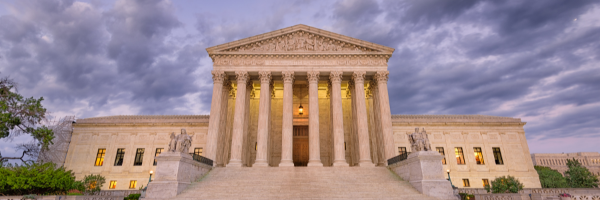In 2015, the U.S. Supreme Court ruled 5-4 that independent redistricting commissions created by voter initiative were constitutional in Arizona State Legislature v. Arizona Independent Redistricting Commission. State voters established that commission by approving a constitutional amendment in 2000—Proposition 106—to oversee the mapping of Arizona’s congressional and legislative districts. The Court ruled that “redistricting is a legislative function, to be performed in accordance with the state’s prescriptions for lawmaking, which may include the referendum and the governor’s veto.”
Article 1, Section 4, of the U.S. Constitution states, “the Times, Places and Manner of holding Elections for Senators and Representatives shall be prescribed in each State by the Legislature thereof.” The state legislature argued that the use of the word “legislature” in this context is literal; therefore, only a state legislature may draw congressional district lines. Meanwhile, the commission contended that the word “legislature” ought to be interpreted more broadly to mean “the legislative powers of the state,” including voter initiatives and referenda.
The Arizona Independent Redistricting Commission is responsible for both congressional and legislative redistricting and is composed of five members. Of these, four are selected by the majority and minority leaders of each chamber of the state legislature from a list of 25 candidates nominated by the state commission on appellate court appointments. These 25 nominees must be 10 Democrats, 10 Republicans and five unaffiliated individuals. The four commission members appointed by legislative leaders then select a fifth member, who must belong to a different political party than the other commissioners.
On June 29, 2015, the Supreme Court ruled 5-4 in favor of the redistricting commission. In the court’s majority opinion, Justice Ruth Bader Ginsburg wrote, “The people of Arizona turned to the initiative to curb the practice of gerrymandering and, thereby, to ensure that Members of Congress would have “an habitual recollection of their dependence on the people.” In so acting, Arizona voters sought to restore “the core principle of republican government,” namely, “that the voters should choose their representatives, not the other way around. The Elections Clause does not hinder that endeavor.” Justices Anthony Kennedy, Stephen Breyer, Elena Kagan, and Sonia Sotomayor joined Ginsburg in the court’s majority opinion.
Chief Justice John Roberts and Justices Antonin Scalia, Clarence Thomas, and Samuel Alito dissented. In his dissent, Roberts argued that the word “legislature” in Article 1 of the United States Constitution ought to be interpreted narrowly to mean the “representative body which makes the laws of the people.” He wrote, “The people of Arizona have concerns about the process of congressional redistricting in their State. For better or worse, the Elections Clause of the Constitution does not allow them to address those concerns by displacing their legislature. But it does allow them to seek relief from Congress, which can make or alter the regulations prescribed by the legislature.”
At the time of the Court’s decision, six states had independent redistricting commissions—Alaska, Arizona, California, Idaho, Montana, and Washington. Since then, voters in two other states—Colorado and Michigan—passed initiatives creating independent redistricting commissions.
Additonal reading:


